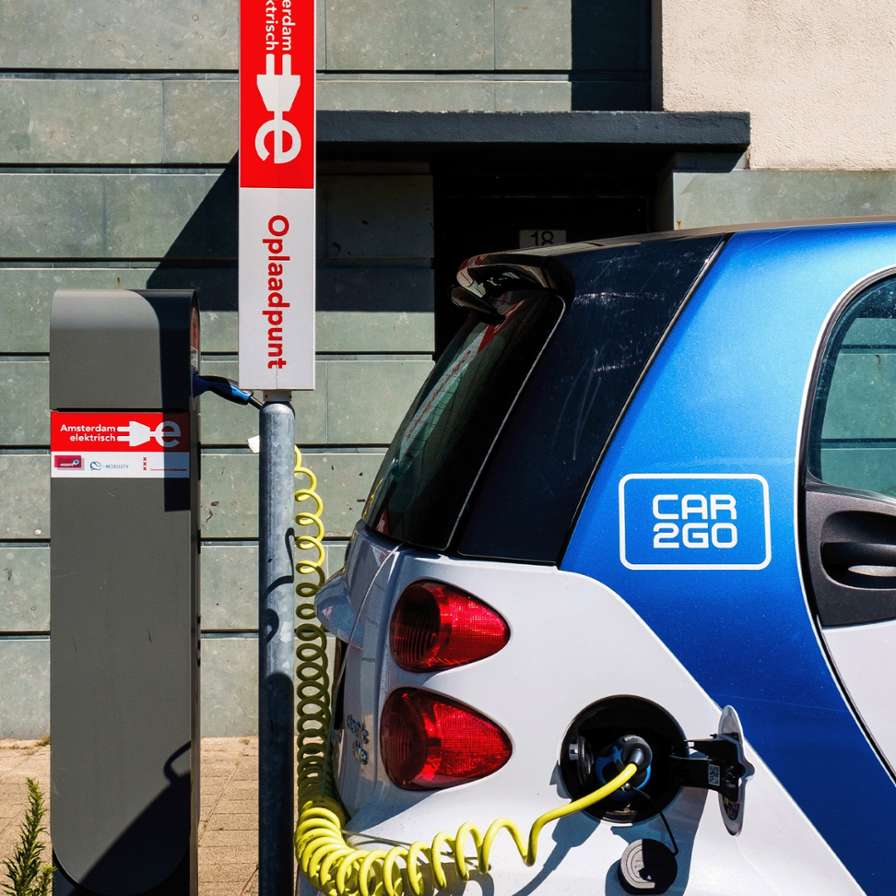Future Charging: de toekomst van elektrisch laden

Het aantal elektrische voertuigen maakt in Nederland een explosieve groei mee. Dat stelt gemeenten, laadexploitanten, energiebedrijven en netbeheerders voor een grote uitdaging: hoe kunnen zij deze schaalsprong op tijd faciliteren met voldoende laadinfrastructuur? In het project Future Charging onderzocht de Hogeschool van Amsterdam (HvA) de laadinfrastructuur van de toekomst.
Kennis van laadgedrag en simulatiemodellen
Het doel van Future Charging was om met simulaties inzicht te krijgen in de effecten van toekomstscenario’s op laadinfrastructuur, het elektriciteitsnet en de openbare ruimte. Zo heeft het team gekeken naar de laadbehoeften in 2030 en scenario’s met snelladers en laadpleinen getest. Simulatieresultaten vormden het startpunt voor ontwerpstudies die leiden tot aanbevelingen voor de praktijk. Hiermee faciliteerde en versnelde het project de invoering van grootschalig elektrisch rijden.
Door onze grondige kennis over laadgedrag en simulatiemodellen kunnen we steeds beter scenario’s voor de toekomst uitrekenen en de toenemende belasting van het elektriciteitsnetwerk verminderen.

Rick Wolbertus
Projectleider en onderzoeker
Onderwijs
De ontwikkelde kennis is verwerkt in het onderwijs, waaronder case studies voor de HvA-minor Data Science. Het project is daarnaast samen gedaan met studenten vanuit verschillende invalshoeken. Zowel studenten met een achtergrond in Engineering, Data Science, Beleid en Psychologie werkten aan het project om het laadgedrag van de toekomst in kaart te brengen. Dit gebeurde zowel tijdens colleges, groepswerk, stages en afstudeermogelijkheden.
Partners
De HvA werkte samen met een consortium bestaande uit: TU Delft, UvA, Gemeente Amsterdam, Rotterdam, Den Haag en Utrecht, OverMorgen, Vattenfall, Engie, ParknCharge, ElaadNL, Social Charging, Taxi Centrale Amsterdam, Nationaal Kennisplatform Laadinfrastructuur, Connekt, Mister Green en Last Mile Solutions.
Contact
Meer weten over dit project? Neem contact op met Rick Wolbertus.
Lectoraat Energie en Innovatie
Dit project wordt uitgevoerd binnen het lectoraat Energie en Innovatie van de faculteit Techniek van de HvA. Het lectoraat draagt met toegepast onderzoek naar duurzame energie en energiebesparing bij aan de energietransitie.
Future Charging bouwt voort op eerdere projecten over slim laden:
Flexpower (2021-2022): de HvA onderzocht of de laadsnelheid van elektrische auto’s aan publieke laadpalen door de dag heen te variëren was, afhankelijk van de hoeveelheid beschikbare energie. Bekijk de eindpublicatie(opent in nieuw venster).
SIMULAAD (2017-2020): met een database van laadsessies in heel Nederland, zijn in dit project verschillende ‘smart charging’-strategieën onderzocht en de effecten daarvan op de laadinfrastructuur. Bekijk de analyse(opent in nieuw venster).
SEEV4-CITY (2016-2020): zonne-energie kan kort opgeslagen worden in batterijen van elektrische auto’s. Deze technologie heet Vehicle2Grid. SEEV4-City onderzocht hoe dit slimme laadconcept opgeschaald kan worden. Bekijk de website van SEEV4-City(opent in nieuw venster) voor alle publicaties.
IDO-LAAD (2015-2019): dit project zette data-analyse en modellering in om professionals in het veld te ondersteunen bij het uitrollen van publieke laadinfrastructuur. Bekijk de eindpublicatie(opent in nieuw venster).
Me2 (2016-2018): me2 was een Europees Smart City project met als doel een nieuwe energie-marktplaats te creëren in een stedelijke omgeving. Bekijk de eindpublicatie(opent in nieuw venster).
Monitoring EV laadinfrastructuur (2015): kijk voor meer informatie op evdata.nl (opent in nieuw venster)